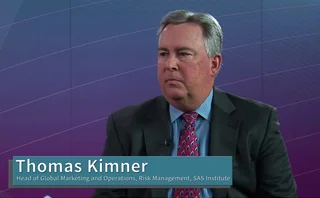
Lehman likely to recoup value of derivatives trades
Counterparties to derivatives trades with Lehman Brothers that are currently in-the-money for the bankrupt estate will not be able to hold off payment indefinitely, predict lawyers.
Section 2(a)(iii), known as the master agreement's 'flawed asset' clause, dictates that when a counterparty is bankrupt, the non-defaulting counterparty may suspend performance under the agreement for an indefinite period of time.
"The intention of the provision is to allow the solvent counterparty to take a good hard look at the troubled counterparty while it decides what to do. And while it is thinking about the credit of that counterparty, it doesn't have to throw good money after bad - it can hold back payments," said Dan Cunningham, senior partner at Allen & Overy and US counsel to Isda in New York.
By virtue of the fact they haven't been terminated, most of the affected master agreements are believed to be in-the-money for the bankrupt estate on a net basis.
As of January 16, Lehman was a party to 18,000 derivatives trades that had not been terminated by either counterparty, according to filings and statements on behalf of the estate in the US Bankruptcy Court for the Southern District of New York.
This figure has slid since December 16, when there were 30,000 - well down from an original total of 193,000 on November 13, 2008.
The reduction has been driven by a set of procedures put in place by the estate to monetise derivatives transactions that have been frozen by section 2(a)(iii). On December 16, a US bankruptcy judge approved a process for assuming and assigning Lehman's derivatives contracts on a wholesale basis.
By doing this, the estate is taking advantage of section 365 of the US bankruptcy code, which allows bankrupt entities to assume or assign any executory contract. An executory contract means any contract involving ongoing obligations on either side - a definition that involves most master agreements, according to lawyers. By assuming and then assigning its master agreements to a third party, Lehman would effectively get a novation for all the trades concerned. In theory, this would earn it a net payment for each agreement based on its mark-to-market position.
The set of procedures passed by the court on December 16 differs from a more controversial set of original proposals filed on November 13. They potentially provided counterparties with little information about which entities contracts would be assigned to, and provoked more than 100 objections from Lehman counterparties, including several major dealers.
In contrast, the new proposals give the collapsed dealer's counterparties more information about the identity of proposed assignees and greater grounds to complain about individual assignments.
With the possibility raised that Lehman's counterparties could be assigned to a new entity - most probably, another dealer - many of them have apparently chosen to terminate trades.
Objections to the procedures have similarly been withdrawn. But by January 16, there were around 50 outstanding objections to the procedures proposed by the estate. It is not known how many of these have been settled outside of court, although a court hearing for those that remain has been scheduled for March 25.
But lawyers warn that objecting counterparties will face an uphill struggle trying to continue holding back payments to the estate. The provisions of section 365 for assuming and assigning contracts are explicit, they argue, while bankruptcy courts institutionally favour the debtor.
"Lehman will have the home-court advantage in any dispute," one Boston-based bankruptcy lawyer told Risk. "But if the counterparty has a reasonable objection, it will get a fair hearing."
Only users who have a paid subscription or are part of a corporate subscription are able to print or copy content.
To access these options, along with all other subscription benefits, please contact info@risk.net or view our subscription options here: http://subscriptions.risk.net/subscribe
You are currently unable to print this content. Please contact info@risk.net to find out more.
You are currently unable to copy this content. Please contact info@risk.net to find out more.
Copyright Infopro Digital Limited. All rights reserved.
As outlined in our terms and conditions, https://www.infopro-digital.com/terms-and-conditions/subscriptions/ (point 2.4), printing is limited to a single copy.
If you would like to purchase additional rights please email info@risk.net
Copyright Infopro Digital Limited. All rights reserved.
You may share this content using our article tools. As outlined in our terms and conditions, https://www.infopro-digital.com/terms-and-conditions/subscriptions/ (clause 2.4), an Authorised User may only make one copy of the materials for their own personal use. You must also comply with the restrictions in clause 2.5.
If you would like to purchase additional rights please email info@risk.net
More on Infrastructure
Communications surveillance solutions 2024: market update
A report offering Chartis’ latest view of the vendor landscape for communications surveillance solutions
SIMONE, the AI that nearly took down a bank
An algorithm designed to create new structured products ran out of control last year with almost catastrophic consequences for a major bank, as our exclusive whistleblower account reveals
Revealed: where banks are (literally) warehousing their swaps
As derivatives notional grows, dealers experiment with novel storage solutions
E-trading takes hold for FX swaps – sort of
Bulk of trades are being executed over screen, but bolder changes have stalled
From DNA to DHA – Preparing for a new era of digital human augmentation
As technology increasingly permeates societies, cultures and everyday activities, its integration into people’s lives is having a profound impact on what is expected of people in the workplace. Deloitte examines this evolution of today’s workforce, the…
Risk and finance: Working more closely together
Video interview: Thomas Kimner, SAS
Video interview: Fabio Merlino, Intesa Sanpaolo
Fabio Merlino, head of retail and insurance risk discusses how the wealth management division of Intesa Sanpaolo upgraded its risk analytics capabilities with the algo system used by its proprietary traders
The changing face of Risk.net and our magazines
Extensive reader consultation has helped us reshape editorial teams and our site







